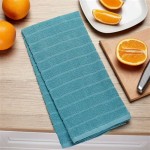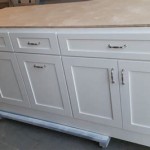How To Choose The Best Free Standing Kitchen Sink Units
Selecting a free-standing kitchen sink unit involves careful consideration of several factors, including available space, intended use, material durability, and aesthetic preferences. Unlike built-in sinks, free-standing units offer flexibility in placement and often contribute a unique visual element to the kitchen. This article details the key aspects to evaluate before purchasing a free-standing kitchen sink, ensuring a functional and visually appealing addition to the cooking space.
Free-standing kitchen sinks, also known as farmhouse sinks or apron-front sinks when featuring an exposed front, are typically independent units that do not require surrounding cabinetry for support. They stand on their own legs or a base, providing stability and allowing for installation in locations where traditional cabinet-mounted sinks might be impractical. These units are often favored in rustic, farmhouse, or industrial-style kitchens, but they can also be incorporated into modern designs to create a focal point.
Assessing Space and Layout
The initial step in selecting a free-standing kitchen sink unit is a thorough assessment of the available space. Measure the area where the sink will be placed, considering both the footprint of the unit and the surrounding workspace. It is crucial to account for adequate clearance around the sink to allow for comfortable movement and access to other kitchen appliances and features. Consider the placement of existing plumbing connections, as relocating these can add significant cost and complexity to the installation process.
Think about the overall layout of the kitchen. A large free-standing sink in a small kitchen can overwhelm the space and impede workflow. Conversely, a small sink in a large kitchen might appear undersized and inadequate for the demands of the user. Consider the proximity of the sink to other essential kitchen zones, such as the stove, refrigerator, and dishwasher, to optimize efficiency during food preparation and cleanup. If space is limited, explore compact free-standing units or those with integrated storage solutions to maximize functionality without sacrificing valuable floor space.
Beyond the immediate area, consider the visual impact of the sink on the overall kitchen design. A free-standing sink often serves as a focal point, so its size and style should complement the existing aesthetic. In an open-concept kitchen, the sink may be visible from other living areas, making its design even more important. Consider the sightlines from different vantage points to ensure the sink integrates seamlessly into the overall design scheme.
Evaluating Materials and Durability
The material of the free-standing kitchen sink unit significantly impacts its durability, maintenance requirements, and aesthetic appeal. Common materials include stainless steel, fireclay, cast iron, copper, and composite materials. Each material possesses unique properties that influence its suitability for different kitchen environments and usage patterns.
Stainless steel is a popular choice due to its durability, resistance to corrosion, and relatively low cost. It is easy to clean and maintain, and its neutral appearance complements a wide range of kitchen styles. However, stainless steel can be prone to scratches and dents, and lower-gauge stainless steel can be noisy during use. Look for sinks made from heavier-gauge stainless steel (16-gauge or lower) for increased durability and sound dampening.
Fireclay sinks, often associated with farmhouse styles, are known for their durability and resistance to heat and stains. They are typically made from ceramic clay fired at high temperatures, resulting in a dense and non-porous surface. Fireclay sinks are less prone to scratching than stainless steel, but they can chip or crack if subjected to heavy impact. They also tend to be heavier and more expensive than stainless steel options.
Cast iron sinks are another durable option, typically coated with a porcelain enamel finish. This finish provides a smooth, non-porous surface that is resistant to stains and scratches. Cast iron sinks are extremely heavy and require substantial support, but they offer excellent heat retention and sound dampening. The porcelain enamel finish can chip or crack if subjected to impact, revealing the underlying cast iron, which can rust if not promptly repaired.
Copper sinks offer a unique aesthetic appeal and possess natural antimicrobial properties. Copper develops a patina over time, resulting in a distinctive aged appearance. Copper sinks can be expensive and require special cleaning products to maintain their finish. They are also susceptible to dents and scratches, although some users appreciate these imperfections as part of the material's character.
Composite sinks are made from a blend of materials, such as granite or quartz particles mixed with resin. These sinks offer a good balance of durability, affordability, and aesthetic appeal. They are resistant to scratches, stains, and heat, and they come in a variety of colors and textures. Composite sinks can be heavier than stainless steel but lighter than cast iron or fireclay.
Considering Functionality and Features
Beyond aesthetics and durability, consider the functionality and features of the free-standing kitchen sink unit. The size and depth of the sink basin, the number of bowls, and the presence of accessories such as drainboards or utensil holders all contribute to its overall usability.
The size and depth of the sink basin should be appropriate for the intended use. A deep basin is useful for washing large pots and pans, while a shallower basin might be preferable for everyday tasks. Consider the height of the faucet and the reach of the sprayer to ensure comfortable and efficient use. If frequently washing large items, prioritize a single bowl sink to maximize usable space.
The number of bowls in the sink is another important consideration. A double-bowl sink allows for simultaneous washing and rinsing, while a single-bowl sink provides more uninterrupted space for larger items. Some free-standing sinks feature a third, smaller bowl for garbage disposal or food preparation. Evaluate personal washing habits and typical cleanup routines to determine the optimal number of bowls.
The presence of accessories can significantly enhance the functionality of the sink unit. Integrated drainboards provide a convenient space for drying dishes, while utensil holders keep frequently used tools within easy reach. Some free-standing sinks include cutting boards or colanders that fit over the basin, maximizing workspace and streamlining food preparation. Consider the availability of compatible accessories and their potential to improve the efficiency of the kitchen.
Moreover, consider the location of the faucet and other plumbing fixtures. Free-standing sinks may require special faucet configurations, as they often do not have pre-drilled holes for faucet mounting. Wall-mounted faucets or deck-mounted faucets with extended shanks are common solutions. Ensure that the chosen faucet is compatible with the sink’s design and provides adequate water flow and pressure. Explore options for soap dispensers, water filters, and other accessories that can be integrated into the sink area to enhance its functionality.
Finally, consider the ease of cleaning and maintenance. Sinks with smooth, non-porous surfaces are generally easier to clean than those with textured or porous surfaces. Pay attention to the corners and edges of the sink, as these areas can be difficult to reach and prone to the accumulation of dirt and grime. Choose a sink material that is resistant to staining and easy to disinfect. Regular cleaning and maintenance will help to preserve the appearance and functionality of the free-standing kitchen sink unit for years to come.
Kitchen Sink Guide Signature Hardware

Freestanding Kitchens 17 Flexible Ways To Create A Rustic Look Real Homes
Kitchen Sink Guide Signature Hardware

How To Choose Your Kitchen Sink Size A Definitive Guide
Kitchen Sink Guide Signature Hardware

Freestanding Island For Kitchen The Ultimate Transformation
Kitchen Sink Guide Signature Hardware
How To Choose The Right Farmhouse Sink For Your Kitchen Signature Hardware

Choosing A Kitchen Sink That S Right For You Delta Faucet Blog

How To Choose The Right Kitchen Sink Size Ultimate Guide
Related Posts








